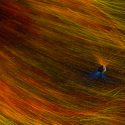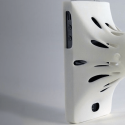If you see a bear do this, don’t run! You might be looking at a bluff charge. The bear might run towards you, but at the last second, veer off to the side. This is the bear sizing you up. And the last thing you want to do is run away. If you do, because of its predatory instinct, the bear will attack. Just like dogs, bears will chase you if you run. The best thing you can do is to stand your ground by waving your hands around and making yourself look bigger. Once the bear takes the hint and retreats, slowly step away without breaking eye contact. Running from a bear can be deadly, but it’s not the worst thing you can do. In this episode, we’ll show you how to avoid any fatal mistakes if you find yourself face to face with an angry bear. Think you’re ready to become a True Survivalist?
Know Your Bears
Bears come in all shapes and sizes, and not knowing the difference can put you on the fast track to being mauled to death. o let’s take a look at the big three. First up, the black bear. This fuzzy guy may look cute, but don’t let that fool you. With it’s signature straight facial profile, tall ears, and short claws, the black bear can pack a punch. Standing a mere 1.5m (5 ft), this is the smallest of the trio. If you come face to face with a black bear, be bold and aggressive. Make yourself look bigger and throw things if necessary. Next, the polar bear. This massive beast is instantly recognizable with its thick white fur, short tail, and huge paws. Reaching up to 3.3 m (11 ft), the polar bear has a keen sense of smell, so even if it doesn’t see you, it can still smell you. And trust me, to a starving polar bear, you smell delicious.Finally, the grizzly bear. With its dark brown fur, round ears, a hump above the shoulder, and long claws, the grizzly bear is the most dangerous of the bunch. Standing at 2 m (6.5 ft), grizzly bear attacks are 3.5 times more likely to result in injury than the average polar bear attack and 21 times more dangerous than the average black bear encounter. Now would be a good time to use your bear spray. Wait … you brought it, right?
Don’t Forget Your Gear
Not packing the right equipment is going to make your life a lot harder. And shorter. It’s important to bring the right tools for the job, and in the case of bear attacks, the tool is bear spray. Bear spray is essentially a form of pepper spray designed specifically for deterring aggressive bears. It contains a concentrated form of capsaicin, the stuff that gives chili peppers their heat. It causes temporary burning and irritation of the eyes, nose, and throat. This makes it difficult for the bear to breathe, see, or smell. Once sprayed, the bear will be disoriented and less likely to attack, giving you a chance to escape. The good news is that bear spray is a non-lethal alternative to firearms, making it a safer option for both you and the bear. But since you forgot it, you took off running and are now frantically looking for a place to hide. In a panic, you look to the trees for safety.
Don’t Climb Trees
Do you know why climbing a tree is one of the worst things to do in a bear attack? Because bears can climb trees. What did you think was going to happen?
Don’t Pet The Cubs
Since we’re stating the obvious, now would be a good time to remind you not to approach any bear cubs. No matter how cute their stupid little ears are. Going near the cubs dramatically increases the likelihood of a bear attack. Do you know what’s worse than being torn apart by a bear? Being torn apart by a mama bear. If Mama thinks you’re a threat to her cubs, she’ll skip the bluff charge altogether and go for something called an aggressive charge. You’ll see this when she opens her mouth wide or snaps her teeth together. Unfortunately, it’ll be the last thing you see.
Don’t Be Messy
And speaking of moms, I’m about to sound like yours. One of the most important things to do to avoid encountering a bear in the wilderness is to clean up your stuff. Bears have a keen sense of smell and they can be attracted to your campsite by the scent of food. So, it’s crucial to store your food, and your trash, correctly. All food should be kept indoors or in a car, and smelly items should be stored in one smell-proof container. Make sure your food is far away from your tent, and that any food scraps are thrown away in a trash can. It’s also important to check the wind direction. Store your food downwind of your tent, so the scent doesn’t blow into the area where you’re sleeping. Trust me, you do not want to wake up to a hungry bear.
Sources
- Six Terrifying Bear Attack Stories. The Editors (2019). Field and Stream.
- Report Details Harrowing Grizzly Attack on Yellowstone NP Trail. Streater, S. (2011). The New York Times.
- What Do You Do With a Bear That Kills a Person? Wilkinson, T. (2015). National Geographic.
- People Describe Their Harrowing Bear Attack Stories. McCann, E. (2019). Ranker.
- How to Not Get Attacked by a Bear. Dell’Amore, C. and Wilkinson, T. (2015). National Geographic.

















